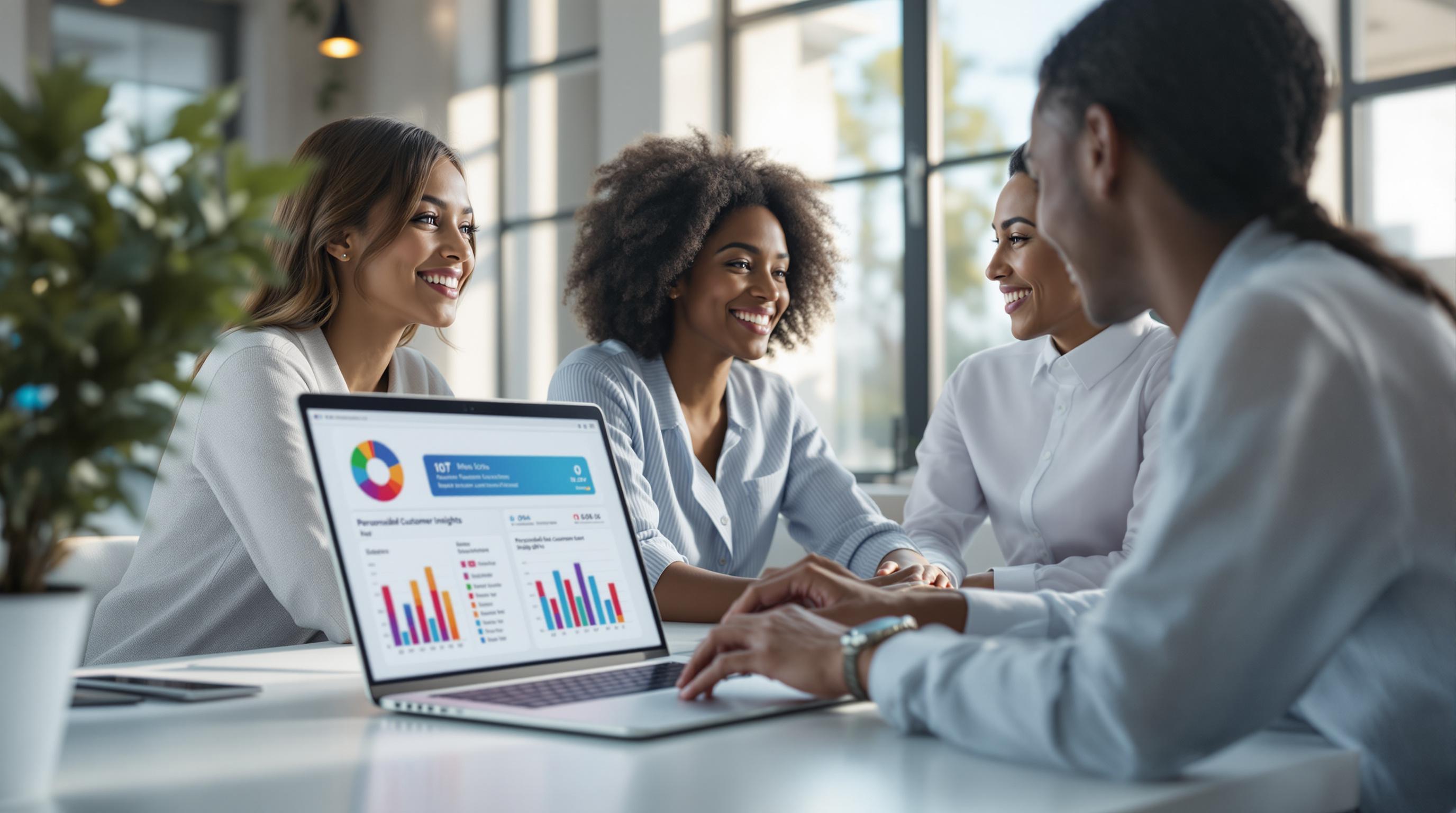API authentication ensures secure access to systems, protecting sensitive data and enabling seamless integration. Here's a quick breakdown of the main methods:
- API Keys: Simple and effective for internal services or public APIs with rate limits.
- OAuth 2.0: Ideal for user-authorized access and third-party integrations.
- JWT (JSON Web Tokens): Great for stateless authentication in microservices and single sign-on.
- Basic Authentication: Easy to implement, suitable for development or legacy systems.
- mTLS (Mutual TLS): Best for high-security needs like financial services or B2B integrations.
Quick Comparison
| Method | Security Level | Complexity | Scalability | Best For |
|---|---|---|---|---|
| API Keys | Basic | Low | High | Internal services, public APIs, developer tools |
| OAuth 2.0 | High | High | Medium | Third-party apps, user-authorized access |
| JWT | High | Medium | High | Microservices, single sign-on |
| Basic Auth | Low | Low | High | Development, internal tools, legacy systems |
| mTLS | Very High | High | Medium | Financial systems, critical infrastructure |
Choose the right method by balancing security, complexity, and scalability based on your system's needs.
API Authentication EXPLAINED! 🔐 OAuth vs JWT vs API Keys 🚀

API Authentication Methods
API authentication methods vary in complexity and security. Below are the main approaches used to protect API endpoints and data. Each method is explained along with its ideal use cases.
API Keys
API keys are a straightforward way to authenticate by using unique tokens that act as both identifiers and secrets. For example, a key like sk_test_4eC39HqLyjWDarjtT1zdp7dc often includes identifiable prefixes to indicate the key type and environment. These are ideal for:
- Internal services needing basic authentication
- Public APIs with rate limiting
- Developer tools where minimal security is sufficient
Pro tip: Always send API keys through request headers instead of including them in URLs. This helps avoid accidental exposure in server logs.
OAuth 2.0

OAuth 2.0 is designed for more complex scenarios, especially when third-party apps need controlled access to user data. It involves several steps: client registration, user consent, token issuance, and secure token use. To reduce risks, tokens should have limited scopes and set expiration times.
JSON Web Tokens (JWT)
JWTs enable stateless authentication by encoding user claims into a compact, URL-safe format. A JWT consists of three parts: a header, payload, and signature. For example:
eyJhbGciOiJIUzI1NiIsInR5cCI6IkpXVCJ9.eyJzdWIiOiIxMjM0NTY3ODkwIiwibmFtZSI6IkpvaG4gRG9lIn0.SflKxwRJSMeKKF2QT4fwpMeJf36POk6yJV_adQssw5c
JWTs are particularly useful in microservice architectures where fast token validation is essential.
Authentication Methods Comparison
| Authentication Method | Security Level | Implementation Complexity | Scalability | Best Use Cases |
|---|---|---|---|---|
| API Keys | Basic | Low | High | - Internal services - Rate-limited public APIs - Developer tools |
| OAuth 2.0 | High | High | Medium | - Third-party integrations - User-authorized access - Multi-service ecosystems |
| JWT | High | Medium | High | - Microservices - Single sign-on - Stateless authentication |
| Basic Auth | Low | Low | High | - Development environments - Internal tools - Legacy systems |
| mTLS | Very High | High | Medium | - B2B integrations - Financial services - Critical infrastructure |
Each authentication method has its strengths and weaknesses. For example, API Keys and Basic Auth are simple to implement but offer lower security. They're often used for internal tools or development environments where ease of use outweighs the need for high protection.
On the other hand, OAuth 2.0 and mTLS provide stronger security but come with more implementation challenges. OAuth 2.0 works well for user-authorized access and third-party integrations, while mTLS is ideal for highly sensitive use cases like B2B integrations or financial systems.
JWT strikes a balance by offering high security with moderate complexity. Its stateless nature makes it a great choice for microservices and single sign-on scenarios.
Performance also varies among these methods. Basic Auth and API Keys are lightweight, adding minimal overhead. JWT validation is efficient, while OAuth 2.0 can introduce delays due to extra network calls. mTLS, though secure, may slow down initial connections.
When selecting an authentication method, think about your system's security needs, resource availability, and scalability requirements. Match the method to your infrastructure, team expertise, and specific use cases to ensure it aligns with your architecture goals.
sbb-itb-b22f30c
How to Choose an Authentication Method
When selecting an authentication method, think about security needs, setup complexity, and system scale. These factors help determine the best approach for your specific situation.
Security Requirements
The level of security you need depends on how sensitive your data is and any compliance standards you must follow.
- For less critical data in trusted environments, Basic Authentication or API Keys might be enough.
- Public-facing APIs often benefit from token-based authentication for a good balance of protection and usability.
- For highly sensitive applications, like financial or healthcare systems, consider stronger options such as OAuth 2.0 or mTLS.
Setup Complexity
Different methods require varying levels of effort to implement. Even seemingly simple options can differ in their setup demands.
- Basic Authentication and API Keys are easier to configure and involve straightforward key management.
- JWT introduces additional complexity, requiring infrastructure for token management, key rotation, and validation.
- More advanced options like OAuth 2.0 and mTLS require significant infrastructure and often need expert oversight to implement properly.
System Scale and Speed
Your system's performance requirements should also guide your choice. High traffic or latency-sensitive systems demand efficient methods.
- For speed, lightweight options like API Keys or JWT work well, as they have minimal overhead.
- Secure methods, such as OAuth 2.0 and mTLS, provide better protection but can slow things down due to added processing time.
In some cases, a tiered approach works best. Use simpler methods for high-volume, low-risk operations, and reserve more secure protocols for sensitive transactions or internal communications. This way, you balance performance and security effectively.
Security Guidelines
Ensure the safety of your API endpoints by using HTTPS and properly managing tokens.
HTTPS Implementation
Always use HTTPS to encrypt communications between the client and server. This step helps safeguard sensitive information from being intercepted.
Token Management
Handle tokens carefully by setting expiration dates, enabling revocation, and storing them securely. These practices strengthen API security and work alongside other recommended measures.
Summary
API authentication methods play a key role in keeping your APIs and data secure. Each method has its own strengths, depending on what you need. API Keys are simple and work well for basic use cases, while OAuth 2.0 is ideal for delegated authorization. JWT tokens offer stateless authentication with detailed user data, Basic Authentication is easy to set up for internal use, and mTLS ensures strong, certificate-based security.
Choosing the right authentication method means weighing factors like security needs, system size, complexity, and your team's expertise. These considerations help you make informed decisions for secure and efficient systems.
For instance, Hatrio Sales uses both OAuth 2.0 and JWT authentication. This combination secures access to sensitive sales data while ensuring smooth performance for features like CRM tools and lead management.



